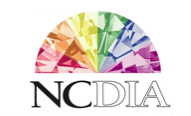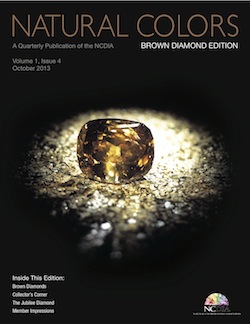Articles and News
Industry News: NCDIA To Host Brown Diamond Conference; New Treatment Destroys Conch Pearls, More September 11, 2013 (0 comments)

Natural Color Diamond Association to Host Brown Diamond Conference
New York, NY—The Natural Color Diamond Association (NCDIA) will host a conference on brown diamonds on Thursday, October 3, from 6:00 to 9:00 p.m. at the Diamond Dealers’ Club, 580 Fifth Avenue in New York. The event—the third in NCDIA’s ongoing educational program—is free and both members and non-members of NCDIA are invited.
Natural brown diamonds often are compared to common color terms like champagne, cognac, chestnut, or latte, as well as trademarked names such as Le Vian’s Chocolate Diamonds. One of NCDIA's goals is to help the trade expand selection of color descriptions to make it more user-friendly and understandable to consumers.
This upcoming conference will feature presentations by leading scientists, gemologists, and designers led by Thomas Gelb, NCDIA’s Director of Education; Wuyi Wang of GIA; Eddie Le Vian of Le Vian Jewelry; Surbhi Pandya of YNY Jewels; and Gary A. Roskin, GG, FGA and publisher and host of the Roskin Gem News.
“It’s important that our industry is able to speak honestly and intelligently about natural color diamonds, so everyone up the chain is providing a comprehensive message from wholesaler, to the designer, to manufacturing and ultimately at retail level,” notes NCDIA vice president Alan Bronstein. “Consumer awareness and demand for brown diamonds is on the rise, and as an educational resource, NCDIA is uniquely positioned to provide the necessary information to promote brown diamonds to consumers.”
Retailers, manufacturers, designers, and press are encouraged to attend the conference. There will be an extensive exhibit of designer jewelry and unset loose brown diamonds in a host of hues. Cocktails and light refreshments will be served, and the event includes time for networking.
NCDIA’s mission is to educate and promote global awareness and desire for natural color diamonds. Founded in 2003, NCDIA is a non-profit, membership-based organization that includes some of the world's most renowned rough diamond producers, diamond and jewelry manufacturers, designers and retailers.

The latest edition of NCDIA's quarterly journal discusses brown diamonds.
Former G&G Editor To Head UK’s Journal of Gemmology
London, United Kingdom—Brendan Laurs, a former editor and technical specialist at GIA’s Gems & Gemology, has been appointed editor-in-chief of The Journal of Gemmology, the academic publication of the Gemmological Association of Great Britain (Gem-A). He replaces Dr. Roger Harding, who was the publication’s editor for the past 20 years.

Brendan Laurs
The move signals greater editorial cooperation between the United States, the United Kingdom, and Europe, as Gem-A also has enlisted the help and support of the Swiss Gemmological Institute SSEF to produce content.
The journal will debut a new look in 2014. Additionally, it will return to a quarterly format, and remains committed to producing hard copies. The next issue will be released in January 2014.
Swiss Lab Alerts Trade To New, Unstable Conch Pearl Treatment
Basel, Switzerland—The Swiss Gemmological Institute (SSEF) has detected a new treatment for conch pearls that results in corrosion of the pearls’ surface. The treatment is applied to the surface of the pearl, and the resulting damage is irreversible without re-shaping and re-polishing , says the lab. The treatment was discovered when a consumer brought a costly conch pearl necklace to be inspected after it came out of storage with white spots and other signs of corrosive damage that weren’t present when it was put away. The damage appears to be limited to the conch pearls and doesn’t affect seed pearls strung between them, suggesting it is the direct result of treatment and not normal wear and tear.

SSEF released this photo of the damaged conch pearl necklace. The white spots show corrosion from a new treatment.
The pearls that already show a corroded surface can be easily identified, but those that haven’t begun to deteriorate are hard to identify, even with a microscope, says the lab. Some telltale signs of the treatment include occasional small glue-like bulges, and brownish granular spots visible under a microscope may indicate the beginnings of the corrosion, but the lab recommends using Raman spectrometry as the preferred identification method of this kind of treatment.







